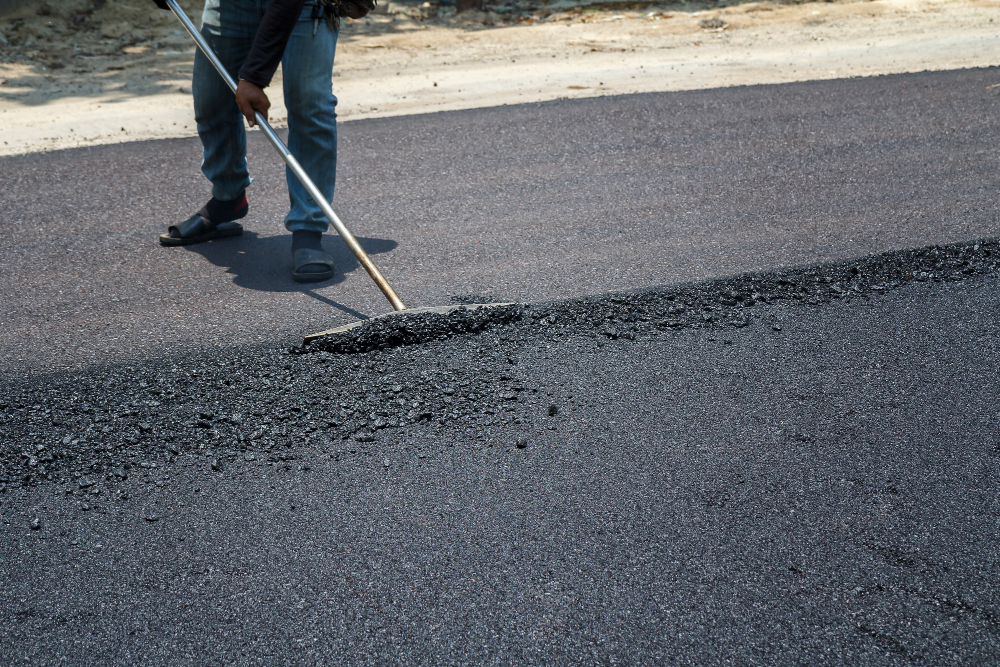
Asphalt indentations can turn a smooth driveway or parking lot into an eyesore that creates safety hazards and reduces property value. These depressions in your pavement surface occur when the underlying base fails or when heavy loads compress the asphalt beyond its capacity. Understanding how to address these issues quickly can save you from costly full-scale replacements down the road.
This comprehensive guide walks you through everything you need to know about repairing asphalt indentations, from identifying the root causes to choosing the right repair method for your specific situation. You'll learn professional techniques that deliver lasting results and discover when it's time to call in the experts.
Before diving into repair methods, it's essential to understand why these indentations form. Several factors contribute to this common pavement problem.
The foundation beneath your asphalt plays a crucial role in surface integrity. When the base layer becomes compromised due to poor drainage, inadequate compaction during installation, or erosion, the asphalt above begins to sink. This creates the characteristic bowl-shaped depressions that collect water and worsen over time.
Repeated exposure to heavy vehicles, equipment, or concentrated loads can compress asphalt beyond its design limits. Delivery trucks, construction equipment, or even heavily loaded dumpsters can create permanent indentations, especially when the asphalt is hot or hasn't fully cured.
Florida's climate presents unique challenges for asphalt surfaces. Intense heat softens the material, making it more susceptible to deformation. Combined with heavy rainfall that can wash away supporting materials, weather conditions accelerate the formation of surface indentations.
Different severity levels require different repair approaches. Choosing the right method ensures your repair lasts and provides good value for your investment.
For shallow indentations less than two inches deep, surface patching offers an effective solution. This method involves cleaning the damaged area, applying a bonding agent, and filling the depression with hot or cold asphalt mix. The new material is then compacted to match the surrounding surface level.
Surface patching works best when the underlying base remains stable. It's a cost-effective option for minor damage that hasn't compromised the pavement's structural integrity.
Deeper indentations or those accompanied by base failure require full-depth patching. This comprehensive approach involves cutting out the damaged section completely, addressing any base issues, and rebuilding the area from the ground up.
The process begins with removing the compromised asphalt and base material. Workers then install new base material, compact it properly, and apply fresh asphalt in lifts to match the original thickness. This method provides the most durable repair for significant damage.
A newer technique gaining popularity uses infrared heating to soften existing asphalt around the damaged area. This allows contractors to blend new material seamlessly with the old, creating repairs that are less visible and more durable than traditional patches.
Infrared repair works particularly well for small to medium-sized indentations where you want to maintain a uniform surface appearance. The heating process reactivates the oils in the existing asphalt, creating a strong bond with the new material.
While some minor asphalt repairs can be handled by property owners, most indentation repairs benefit from professional expertise.
Small, shallow indentations in low-traffic areas might be suitable for DIY repair using cold-patch asphalt available at home improvement stores. These products work for temporary fixes or very minor damage, though they typically don't provide the longevity of professional repairs.
Success with DIY repairs depends on proper surface preparation, adequate compaction, and realistic expectations about durability. Cold-patch materials generally don't bond as well as hot asphalt and may require more frequent maintenance.
Professional contractors bring specialized equipment, quality materials, and extensive experience to every repair project. They can accurately assess whether base issues need addressing and have access to hot-mix asphalt that provides superior durability.
Professional repairs also come with warranties and the assurance that the work meets industry standards. For properties in Orlando, FL, where heat and humidity create challenging conditions, professional expertise becomes even more valuable.
Understanding what professional asphalt repairs involve helps you make informed decisions and set appropriate expectations.
Experienced contractors begin with thorough assessment of the damaged area and surrounding pavement. They determine whether base repair is necessary, calculate material requirements, and plan the repair sequence to minimize disruption.
This planning phase is crucial for lasting repairs. Contractors consider factors like drainage, traffic patterns, and future maintenance needs when developing their approach.
Professional repairs use hot-mix asphalt that's delivered fresh from the plant or mixed on-site. The material is applied at optimal temperature and compacted using proper techniques and equipment.
Quality control measures ensure the repair integrates well with existing pavement and provides the structural integrity needed for your specific application.
Smart maintenance practices can significantly extend the life of your asphalt repairs and prevent new indentations from forming.
Scheduled maintenance including crack sealing, seal coating, and prompt repair of minor damage helps preserve your pavement investment. Addressing small problems early prevents them from developing into major indentations.
Understanding your pavement's load capacity and managing heavy vehicle access helps prevent damage. Consider restricting heavy deliveries during hot weather when asphalt is more susceptible to deformation.
Ensuring proper drainage around your asphalt surfaces protects the base layer from water damage. Good drainage prevents the subsurface issues that often lead to surface indentations.
Asphalt indentations don't have to become major headaches if you address them promptly with appropriate repair methods. Whether you're dealing with minor surface issues or significant structural problems, understanding your options helps you make decisions that provide lasting value.
The key to successful repairs lies in accurate assessment of the damage, choosing the right repair method, and executing the work with quality materials and proper techniques. While minor issues might be suitable for DIY approaches, most indentation repairs benefit from professional expertise, especially given the challenging climate conditions that affect pavement in Florida.
If you need professional asphalt repairs in Orlando, FL, contact Florida Sealcoating today to get a quote. Their experienced team can assess your specific situation and recommend the most effective repair approach for your pavement needs.